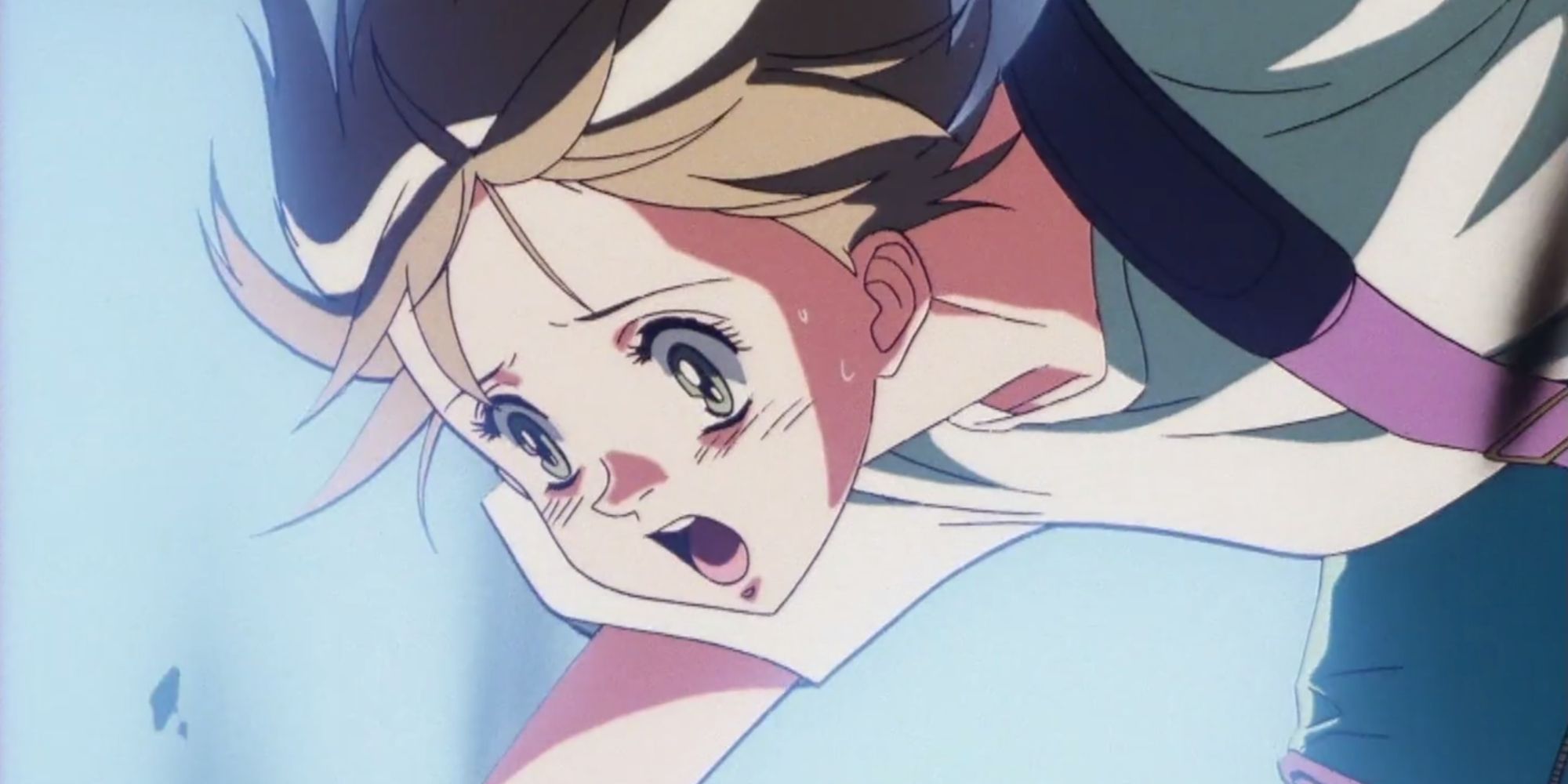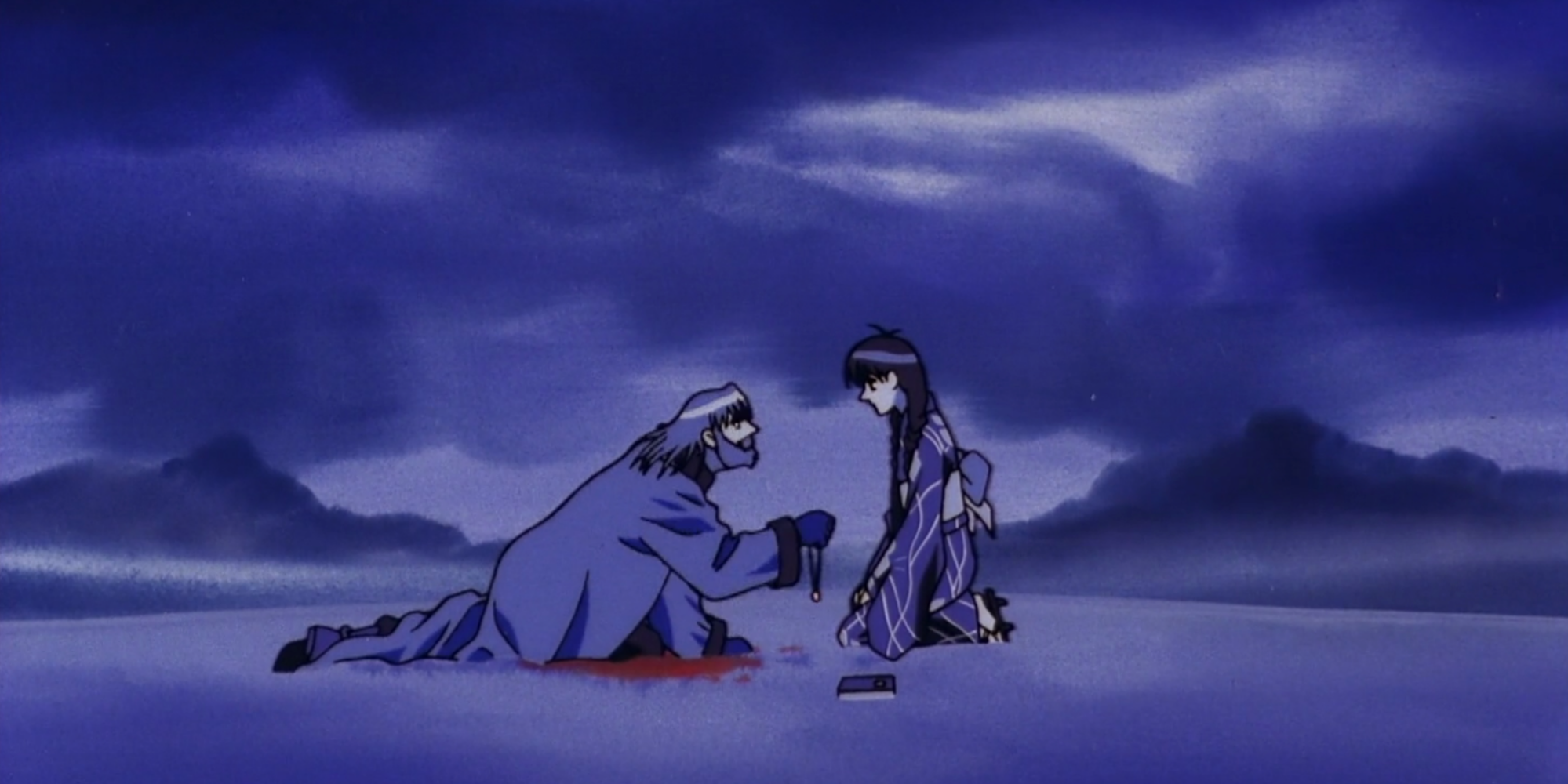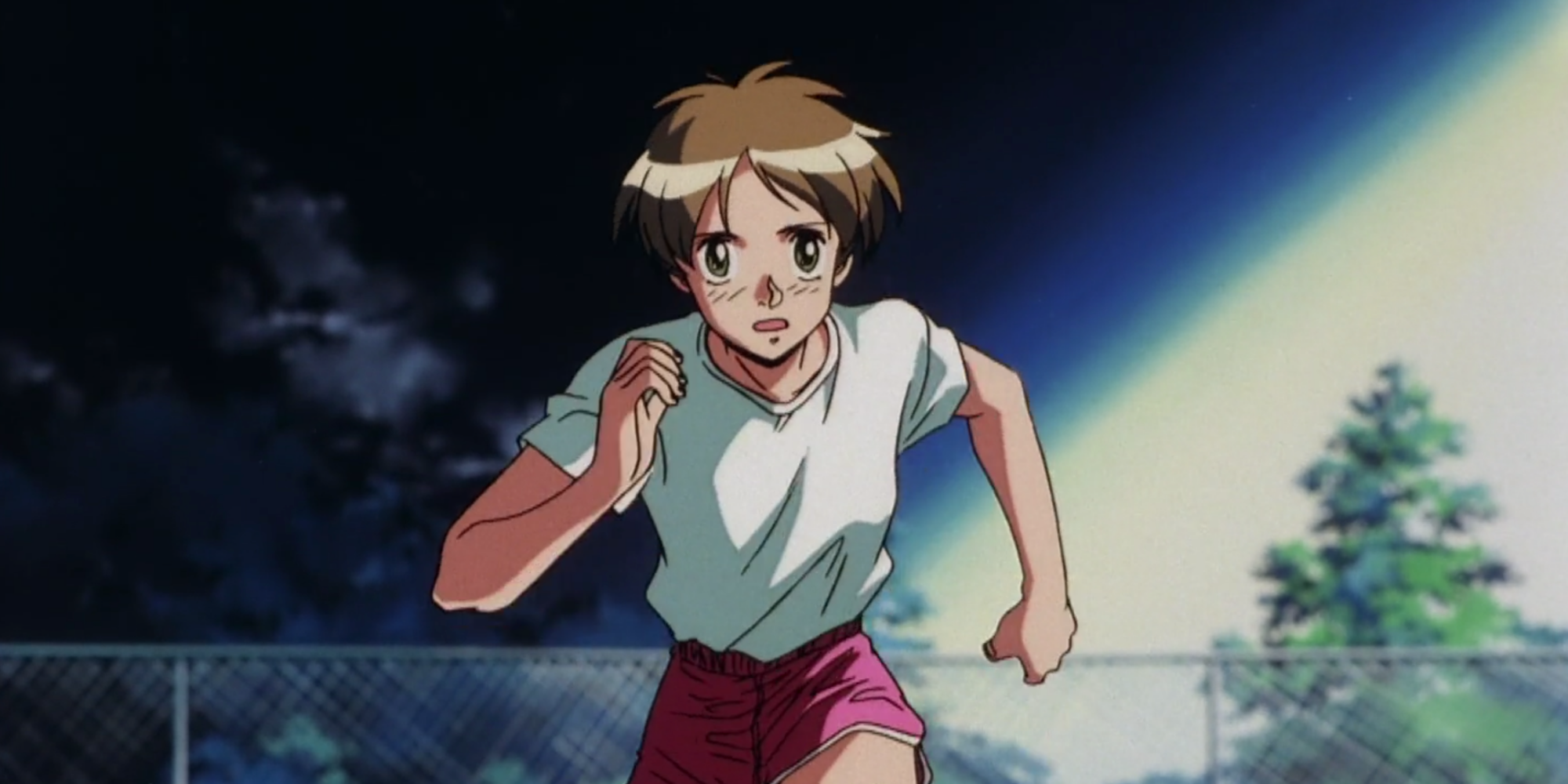
WARNING: The following article contains significant spoilers for the entirety of The Vision of Escaflowne, available on Crunchyroll as well as All 4 in the UK.
Over 25 years ago, The Vision of Escaflowne made an indelible impact on anime history with its groundbreaking blend of shojo fantasy and shonen mecha battles. Meanwhile, in the modern anime landscape, the isekai genre of modern protagonists finding themselves lost in a fantasy world is more popular than ever.
Escaflowne is not only a great isekai; it’s an anime that takes full advantage of the isekai genre. Its story demands a relationship between a fantastical world like Gaea and a familiar world like planet Earth. This is evident in the turbulent history of Gaea as well as Escaflowne’s unique protagonist Hitomi.

The Atlanteans were a highly advanced people who lived on Earth. They developed technology that converted human thought into energy. The characters of Escaflowne refer to this as the power to grant wishes. However, their intellect gave way to hubris and their own technology destroyed them. Their final act as a civilization was to use their pendants to create the planet of Gaea. Modern Earth is unaware of Gaea, but its influence would continue to affect Earth humans throughout history -- and vice versa.
An Earth scientist by the name of Isaac was unexpectedly transported on his deathbed to the Gaea nation of Zaibach and saw that it had become a dystopia plagued by poverty. Using Earth science, he developed it into the technologically advanced Zaibach Empire that would become the driving antagonistic force of the series. In one of the series’ more bizarre touches, Isaac is also ambiguously implied to be English physicist Sir Isaac Newton.
Later still, an unnamed Japanese girl would also be inexplicably teleported to Gaea. The girl met Leon Schezar, an explorer from the Gaea nation of Asturia. Leon abandoned his family to research Atlantis, coming into possession of an Atlantean pendant. When Zaibach soldiers assassinated him to steal his research, the dying man used the pendant's power to wish for the girl to return to Gaea one more time. He entrusted the pendant to her and she returned to Earth.
Decades later, the girl gave the pendant to her granddaughter Hitomi Kanzaki. At the start of the series, Hitomi is a skilled high school track athlete. She lends the pendant to her crush Amano and asks him to use its pendulum swings as a timer to see if she can beat her lap record. If she does, Amano agrees to give her her first kiss. Instead, Van Fanel, crown prince of the Gaea nation of Fanelia, appears battling a dragon, and Hitomi is whisked away with him to the mysterious world of Gaea. Amano reaches out as she is lifted away, just long enough for the pendant to be transported with them to the other world.
There, Hitomi meets many interesting characters, including Leon’s son, the knight Allen Schezar. It is implied that humans from Earth have been to Gaea between Hitomi’s grandmother and herself. A CD appears in a marketplace in Asturia, for example.

In Episode 5, “Seal of the Brothers,” Zaibach general Folken holds Van prisoner. Hitomi has a plan to find him, telling Allen that she's always had hunches that turn out to be true and that they’ve been getting stronger recently -- ever since she arrived in Gaea. Allen is unconvinced, but Hitomi gives him a Tarot reading so accurate and specific that he has no choice but to let her try, telling him his father’s mistakes weigh heavily on his mind. Hitomi then swings her pendant over a map, successfully locating where Van is held.
Tarot readings are a European invention from Earth that have become one of Hitomi’s interests in her daily life in Japan. In the fantastical world of Gaea, they take on a new context. The fact that Tarot readings are often seen as mere superstition on Earth but are undeniably magical on Gaea is an example of how isekai benefits from the potential irony of having characters and elements that come from a mundane, realistic world.
The relationship between both worlds plays one final role in the unique story of Escaflowne. In Episode 24, “Fateful Decision,” Hitomi has become so disturbed by the violent lengths Van is going to to protect her that she has wished to return to Earth. Reliving the day before her disappearance, Hitomi deliberately recreates the circumstances of her transportation to Gaea. This is partly because she realizes that her best friend Yukari loves Amano more than she does, but also because of how much she has come to miss Van. The way in which Hitomi reemphasizes her dedication to Gaea is made more meaningful by the fact that she used to be trapped there -- a cornerstone of the isekai genre.
As well as its iconic characters and stirring soundtrack, Escaflowne is remembered 25 years later for its original fantasy setting. Gaea’s landscapes, architecture and politics are original and creative, but its strength as a setting also comes from its relationship with reality. Escaflowne is an isekai that quite literally makes the best of both worlds.
0 Comments